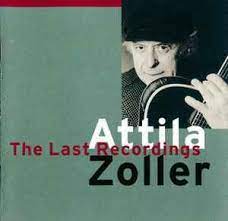
Daily Dose Of Jazz…
Attila Cornelius Zoller was born on June 13, 1927 in Visegrád, Hungary. As a child, he learned violin from his father, a professional violinist. While in school, he played flugelhorn and bass before landing on the guitar. Dropping out of school he played in jazz clubs in Budapest while Russia occupied Hungary. He fled Hungary on foot through the Austrian mountains with his guitar in 1948 as the Soviet Union was establishing communist military rule. Settling in Vienna, he became an Austrian citizen and started a jazz group with accordionist Vera Auer.
The mid-1950s saw Zoller moving to Germany and playing with Jutta Hipp and Hans Koller. When American jazz musicians passed through, such as Oscar Pettiford and Lee Konitz, they persuaded him to move to the United States. He moved to the states after receiving a scholarship to the Lenox School of Jazz. One of his teachers was guitarist Jim Hall and his roommate was Ornette Coleman, who got him interested in free jazz.
From 1962–1965, Zoller performed in a group with flautist Herbie Mann, then Lee Konitz and Albert Mangelsdorff. Over the years, he played and recorded with Benny Goodman, Stan Getz, Red Norvo, Jimmy Raney, Herbie Hancock, Ron Carter, Shirley Scott, Cal Tjader, Jimi Hendrix, and in New York City jazz clubs in the 1960s with pianist Don Friedman.
During the Seventies he started the Attila Zoller Jazz Clinics in Vermont, later named the Vermont Jazz Center, where he taught until 1998. He invented a bi-directional pickup, designed strings and a signature guitar series. Between the years 1989 and 1998, he played more and more with the German vibraphonist Wolfgang Lackerschmid. They also did recordings together. He performed with Tommy Flanagan and George Mraz in New York City three weeks before his transition in Townshend, Vermont on January 25, 1998.
More Posts: bandleader,educator,guitar,history,instrumental,inventor,jazz,music
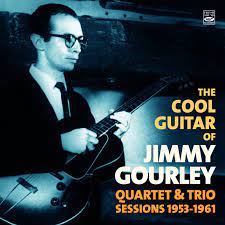
Daily Dose Of Jazz…
James Pasco Gourley, Jr. was born June 9, 1926 in St. Louis, Missouri. He met saxophonist Lee Konitz in Chicago when both were members of the same high school band and credits Konitz with encouraging him to become a serious musician.
His father started the Monarch Conservatory of Music in Hammond, Indiana, though he didn’t teach and bought his son his first guitar. Jimmy took his first guitar classes at the school and became interested in jazz while listening to the radio, enjoying in particular Nat King Cole. For his first professional experience as a performer, he dropped out of high school to play with a jazz band in Oklahoma City, Oklahoma.
From 1944 to 1946 Gourley served in the U.S. Navy. Upon his return to Chicago, Illinois he met guitarist Jimmy Raney and wanted to play like him. He worked in bars and clubs with Jackie Cain & Roy Kral, Anita O’Day, Sonny Stitt, and Gene Ammons. Through the G.I. Bill he received tuition for three years to any college in the world.
Beginning in 1951, Jimmy spent the rest of his life in France, working with Henri Renaud, Lou Bennett, Kenny Clarke, Richard Galliano, Stéphane Grappelli, Bobby Jaspar, Eddy Louiss, Martial Solal, and Barney Wilen. He played with American musicians who were passing through, including Bob Brookmeyer, Clifford Brown, Stan Getz, Gigi Gryce, Roy Haynes, Lee Konitz, Bud Powell, Zoot Sims, Lucky Thompson, and Lester Young.
Guitarist Jimmy Gourley, who spent the better part of his life in Paris, France transitioned at the age of 82 on December 7, 2008 in Villeneuve-Saint-Georges, France.
More Posts: bandleader,guitar,history,instrumental,jazz,music
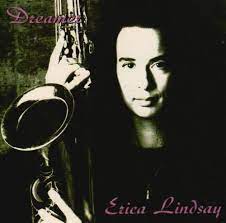
Daily Dose Of Jazz…
Erica Lindsay was born June 5, 1955 in San Francisco, California to parents who were both teachers and lived in Europe in the 1960s. She began her studies in composition with Mal Waldron in Munich, Germany when she was fifteen years old. She played clarinet, then alto and tenor saxophone. In 1973, she spent a year of study at the Berklee School of Music in Boston, Massachusetts and then went back to Europe, where she began her music career. She formed a local quartet and went on tour. Since 1980, she has lived in New York.
As a saxophonist she has worked with Melba Liston, Clifford Jordan, Dizzy Gillespie, McCoy Tyner, Reggie Workman, George Gruntz, and Pheeroan akLaff. Lindsay composed for theater, television, and dance productions and worked with poets and performance artists such as Carl Hancock Rux, Janice King, Janine Vega, Mikhail Horowitz and Nancy Ostrovsky. She leads her own quartet and is the co-leader of a quartet with Sumi Tonooka.
Erica’s 1989 debut album Dreamer was released on Candid Records, with contributions from Robin Eubanks, Howard Johnson, Francesca Tanksley, and Anthony Cox. The 1990s and 2000s saw her playing with Oliver Lake, Baikida Carroll, Howard Johnson, Jeff Siegel, Thurman Barker and the band Trace Elements. Their album Yes – Live at the Rosendale Cafe appeared in 2008.
Saxophonist Erica Lindsay is co-founder of the Artists Recording Collective recording label, a visiting Assistant Professor at Bard College and continues to perform and record.
More Posts: bandleader,educator,history,instrumental,jazz,music,saxophone
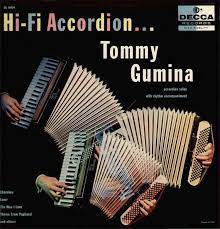
Daily Dose Of Jazz…
Thomas Joseph Gumina was born on May 20, 1931 in Milwaukee, Wisconsin. He began playing accordion at age eleven, and took lessons on the instrument in Chicago, Illinois throughout the second half of the 1940s.
He began his professional career working with Harry James on television in 1952 as an accompanist for popular tunes, and in 1955 Gumina began working solo and as a leader with an ensemble. He recorded with Buddy DeFranco and Willie Smith in the 1960s.
Tommy started experimenting with modifying an electric accordion, whose amplified sound resembled that of an electronic organ. During the Seventies he was occasionally active as a performer, working with Art Pepper in 1974, but he increasingly turned his concentration to his amplifier manufacturing business, Polytone Musical Instruments which was based in North Hollywood, California.
Along with guitarist Joe Pass, they co-founded Polytone Records in 1987. Accordionist Tommy Gumina, who was also a musical instrument builder, transitioned on October 28, 2013.
More Posts: accordion,bandleader,history,instrumental,jazz,music
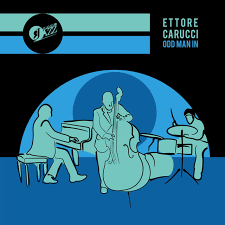
Daily Dose Of Jazz…
Ettore Carucci was born on May 18, 1969 in Taranto, Italy and began playing the piano at the age of four. Graduating in classical piano he went on to join a jazz band named Taras Jazz Forum in 1989 and played with a jazz quintet composed of experienced jazz musicians from his area. By 1993/94 he attended two workshops, Siena Jazz and Umbria Jazz, where he won two scholarships. He studied jazz with Danilo Rea, Ray Santisi, and Paul Schmelling.
Throughout his career Ettore has had the opportunity to perform with a who’s who list of American musicians not limited to Benny Golson, Jerry Bergonzi, Eric Marienthal, Dennis Chambers, Christopher Thomas, Greg Hutchinson, Mike Moreno, Tony Scott, Bob Mintzer, Sonny Fortune, and Rachel Gould, as well as Anne Ducros, Maria Pia De Vito, Massimo Moriconi, Maurizio Giammarco, Marco Tamburini, Philip Catherine, Massimo Manzi, Fabrizio Bosso, Tullio De Piscopo, the Jazz Studio Orchestra and numerous others.
By 2001 he was participating in the Umbria Jazz Festival workshops where he won a scholarship to the Berklee College of Music in Boston, Massachusetts. Ettore had the opportunity to perform with the Berkee College of Music Trio. In the same year he participated at the jazz festival in Orvieto with the Berklee Award Group during the edition of Umbria Jazz Winter.
2005 saw him playing at the Blue Note in Milan, Italy with the Sonny Fortune Quartet and two years later was playing with his peers in New York City. Pianist, composer and educator Ettore Carucci has recorded nine albums as a leader, thirty-eight as a sideman and has released twenty compilations. He continues to compose, teach, perform and work on various artistic projects..
More Posts: bandleader,composer,educator,history,instrumental,jazz,music,piano



